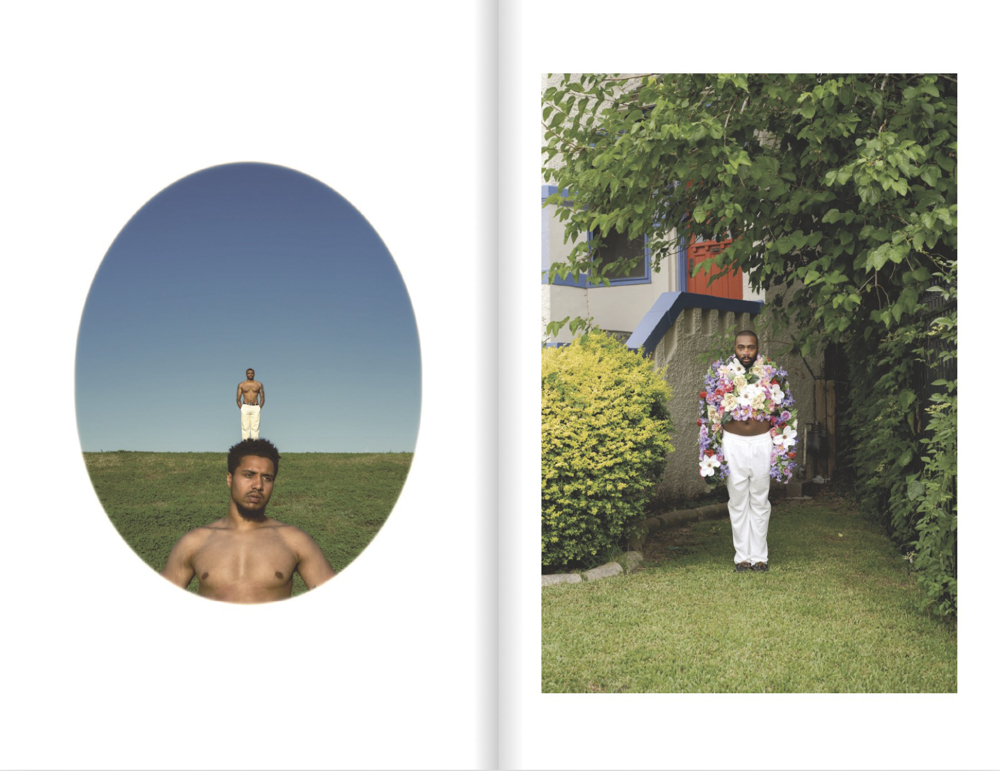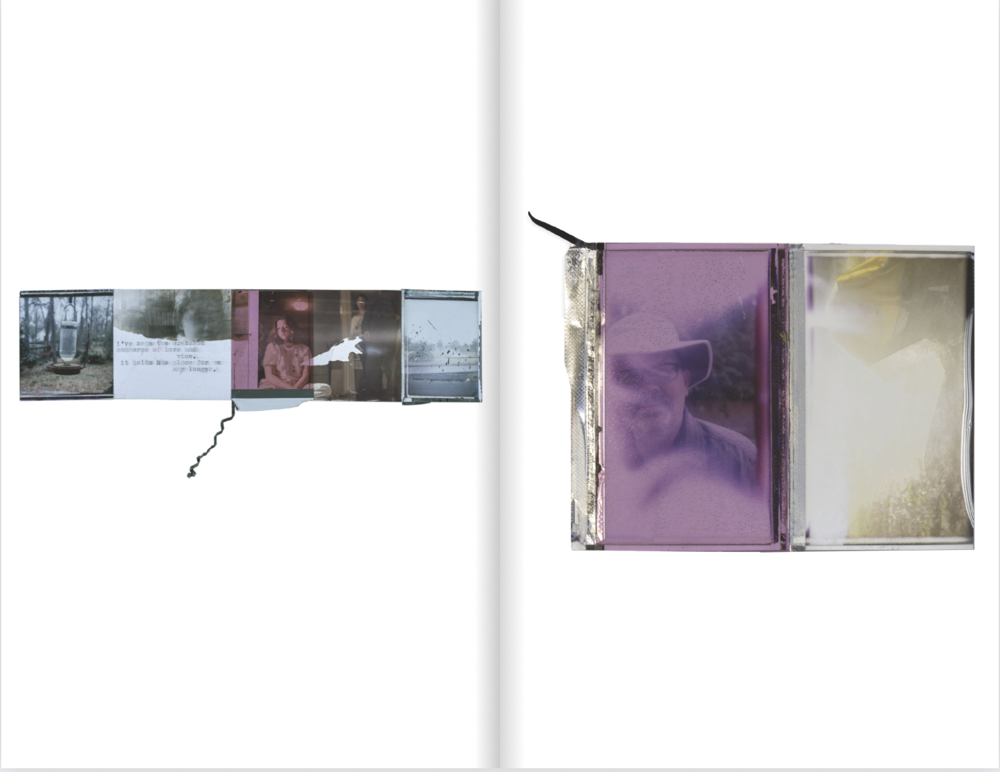Brandt Vicknair and David Armentor: Density
Today we are looking at a collaboration between David Armentor and Brandt Vicknair, Density, a photography magazine that looks and feels like an exquisite paperback book with a satin cover and thick matte pages. The design is minimalist, the photographs perfectly printed. Each section begins with breathing room–a spare grayscale page imprinted with the photographer’s name, a QR code, and nothing else.
Follow Density Magazine on Instagram: @density504/
David Armentor is a Gulf Coast native devoted to a lens-based narrative that specializes in 19th and 20th-century photographic processes. Whether working in personal practice, commercial, or film production he creates with a concept-first approach, strengthening an image’s ability to be a better storyteller.
He is committed to finding common ground through art and believes in collaboration and having a habitual art practice.
David’s latest work Taste and See is an exhibition built on the idea that setting can propagate camaraderie and unity. In a climate that praises polarization and stokes conflict, this exhibition aims to demonstrate that commonality can be found through the simplicity of place.
In Gulf Coast, Louisiana we share pessimistic landscapes thick with humidity, heat, and diffused opportunity for understanding.
Artist and educator Robert Adams speaks on the idea that art helps us recognize what we already know: “We don’t discover new things but rediscover old things through art.” As we swim in the murky waters where reality and memory intersect, this exhibition seeks the opportunity for rediscovered perspective and kindness.
Believing in the power of commensality, this exhibition does not seek to convince or further an agenda; rather it sets the table with familiarities and welcomes the viewer to look, reminisce, remember, and enjoy a love letter that was written to a place.
Taste and See will be on display at the Hilliard Museum in 2025.
Follow on Instagram: @davidarmentor
Brandt Vicknair is an artist and serial hobbyist living and working in his hometown of New
Orleans, Louisiana. His career has spanned live music and film production along with his commercial photography studio.
His work depicts the unique characteristics of southern Louisiana, which is consistently among the poorest, least-educated, and most violent states in the US. Using a dark comedic approach, Brandt illustrates these limitations through action-less explorations of the bleak while striking a balance by rendering with the bright splashing of light and color—creating scenes that are often at odds with themselves.
Brandt takes on a variety of collaborative projects, including a collage duo, Mash
Buhtaydusss, with Barbie L’Hoste. Most recently, he has teamed up with fellow artist David Armentor to create Density, a quarterly print publication that serves to explore and highlight purpose-driven art and professional practices in the Deep South.
Follow on Instagram: @brandtimage
Karen Bullock: The first volume of Density (Hello, I’m a Ghost, Dec. 2023) is about “the silent nature of photography.” The curation includes portraits, street scenes, and created landscapes but no words. The silence is felt.
I am excited to hear more about this project but first, let’s look at your personal work.
Brandt, there is a sense of solitude and quiet mystery even amid humor in the work you and David have presented today. What is it about this stillness that engages and inspires you? The first volume of Density suggests that silence may be a photograph’s greatest strength. Would you elaborate on that concept in your own work?
Brandt Vicknair: So much of my work is made in very concentrated bursts. I’ve tried, but I’m not the type of person that carries a camera around everywhere, so I make dates with myself to go exploring. It’s during these extended periods of solitude on the road that I gain a bit of clarity. It’s just me alone with my own thoughts, doubts, and second guesses.
Sometimes the right scenes just present themselves neatly with a safe place to pull over, but I mostly have to wrestle with the fact that I should have found a way to shoot the scene I saw 30 miles ago. Backtracking allows a new perspective, different light, the other side of the road, etc.
I like to go exploring at night as well, so the stillness and silence on dimly lit state highways can often feel exaggerated. Being left with only your observations in the middle of the night makes you question why you’re here. You may be referencing the scene you’re capturing when the question first arises, but eventually “here” may refer to this time, this planet, or in the case of my work, the state of Louisiana specifically.
In the end, you’re left with a still image. A silent and static representation. Now it’s the viewer’s turn to interpret what they’re seeing and bring their own experiences and thoughts to the table.
Karen Bullock: David, you write about the importance of commensality and the commonality that can be found through a shared sense of place. Collaboration is another thread that weaves through your work and Brandt’s. You mentioned your upcoming exhibition at the Hilliard Museum as an opportunity for new perspectives and kindness.
In the world of social media, where millions of photographs are posted each day and calls for photography “competitions” appear regularly, would you talk about how creating opportunities for engagement is part of your daily practice as an artist?
David Armentor: Sometime back I realized I’d been basically making work for other photographers/artists. Trying to impress with technique, one-up, get noticed, etc. It was part of my learning process. The thing is, that world has a surplus of people making great work; I found that perhaps my voice would be more helpful in a different space. For Taste and See, I was aware of who I wanted to make this work for. I often thought of how high school peers, who have little to no formal art education; or my 7-year-old daughter may respond. Seeking to promote self-discovery, I unveil various ways of looking at common themes and then ask: “What is the purpose of this work, and who is it for?” My approach is purposefully pedestrian and seeks to entertain viewers of all engagement levels.
How it Began / Collaboration
Brandt and David have been collaborators and friends for years and share the same
compulsion to take on new information, new challenges, and to build entirely new skill sets. They have worked together professionally in the film industry and on commercial photo projects along with creative endeavors as makers and exhibitors.
B.V.: We share a brain in a lot of ways. We both can’t help but latch on to a new idea and run with it. Whether it’s Dave picking up fly fishing and classical guitar or me trying to program analog synthesizers and dabbling in watercolor – something about us is physically and mentally incapable of keeping still.
D.A.: We certainly complement one another – while we share some similarities in our nature, we each have strengths and weaknesses that lend to an organic collaboration such as Density.
David and Brandt do not pretend to be art critics; rather they want to create a space for the lens-based community to amplify their voices and do a small part in helping to promote work that should not go unnoticed. Too often is the case that artists invest resources of time, money, and connections for an exhibition; there is a really fun party, perhaps a few sales, then it comes down without another word. They understand that this is the nature of being an artist in a smaller city and don’t want to come off as jaded; however, more importantly, they believe that this does not have to be the case.
B.V.: We’re genuinely creating the thing that we wish this community had – what we are after is a network of artists and viewers that celebrate one another and triumph in our collective contribution. It’s all based on a willingness to share and listen. We’re trying to reframe a medium that is now typically experienced digitally and engage in the real world through connection and understanding.
Karen Bullock: A network of artists and viewers celebrating one another in the real world is a beautiful intention. It is an asset to the photographic community. Please share your process and how you select work to be included.
BV/DA: The project is three-pronged: the physical magazine, short video vignettes of each artist, and a release event. The print piece comes first, we do all the conceptualizing and curation here. It starts with a broad theme – the first volume spoke to the silent nature of photography itself while the latest volume questions why do this at all.
We generally start with a challenge or a problem that we’re trying to solve and then identify artists based on relationships and recommendations given by peers, mentors, and artists who participated in previous volumes. These rosters are created to represent many different outlets of photography i.e. commercial, fine art, journalism, process-based etc. We feature artists who will have different perspectives. For instance, placing someone who has been practicing for decades alongside someone who is successfully emerging allows for great insight.
Working in tandem with the print piece is a 3-5 minute video vignette of each artist speaking on their practice. As the magazine has very few words, this piece allows the artist space to illustrate beyond the image and an artist’s statement to share more nuanced thoughts and ideas.
We owe a huge thank you to Gavin Johnson of Modern Digital who was integral in helping with Density’s design work and video production. As you can imagine, no one is getting rich off of this project. We are extremely grateful for the time he has contributed.
KB The second volume was released (Walk on Water, Mar. 2024) at the Ogden Museum of Southern Art and included a panel discussion with featured artists.
BV/DA The release party or event is different for every issue. It is designed to expand an
audience, to celebrate the featured artists, and to put people in a room together who have shared interests but may not regularly overlap. Exhibitions, workshops, panel discussions, and installations are all avenues that we explore; these could take place at the Ogden or someone’s backyard. The style of the event is dictated by the theme of the issue.
Density’s mission is to create opportunities for lens-based artists throughout the Deep South by amplifying their work and sharing their stories. We are extremely grateful for all of the trust, partnership, and guidance this community has generously offered. It is our hope to get this project to a sustainable state through grants, individual patrons, and continued partnerships.
Karen Bullock is a photographer living in Alabama. She is known for her documentary-style images of the American South, with a focus on expressions of faith, considerations of home, and the enduring spirit of nature. Her practice uses vivid color and light to explore the unheard voice, via gesture, sense of place, and mood. During a three-month cross-country road trip with her husband and their two dogs in 2023, Karen began a new project and is working to complete it.
Follow on Instagram: @karenbpix
Posts on Lenscratch may not be reproduced without the permission of the Lenscratch staff and the photographer.
Recommended
-
David Katzenstein: BrownieJanuary 11th, 2026
-
Amani Willet: Invisible SunJanuary 10th, 2026
-
Jamel Shabazz: Prospect Park: Photographs of a Brooklyn Oasis, 1980 to 2025December 26th, 2025
-
Andrew Lichtenstein: This Short Life: Photojournalism as Resistance and ConcernDecember 21st, 2025
-
Andrew Waits : The Middle DistanceDecember 20th, 2025





























































